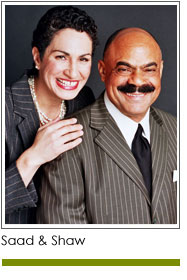 We were reviewing a proposal for a client this week and noticed in the funder’s guidelines a request for information about the organization’s ongoing training and professional development activities, and the budget for these. Needless to say there was silence in the room. Having worked with organizations for a long time we know that nonprofits are often overwhelmed by the information funders want to see in a proposal. We could feel their pain, and almost read their minds, “What??##@@?!??”
We were reviewing a proposal for a client this week and noticed in the funder’s guidelines a request for information about the organization’s ongoing training and professional development activities, and the budget for these. Needless to say there was silence in the room. Having worked with organizations for a long time we know that nonprofits are often overwhelmed by the information funders want to see in a proposal. We could feel their pain, and almost read their minds, “What??##@@?!??”
And yet we thought it was an important question: funders want to know the extent to which an organization invests in its people, and builds the capacity to address community needs in an ever-changing environment. People are at the core of the nonprofit sector, and investments in people are a sign of organizational health. Exposing employees and volunteers to best practices encourages each to grow to their highest level.
Don’t let training and professional development be seen as a “cost” by those who seek to keep budgets lean. There’s a flip side: the people you serve, your board members and local stakeholders will all eventually know whether you care about your employees and volunteers or if you don’t. It shows in your strategies, services, and technology. Are you “just getting by” or is your organization thriving. It’s expensive to “save” on training and professional development. The nonprofit “revolving door” is often attributed to employees not feeling valued, not having the tools to be successful, and not having access to training and best practices.
But where does the money come from? It is clear to us that so many organizations – especially those that are grassroots or emerging – often have a difficult time securing funds for operations, let alone professional development. But it must be done. And done with accountability and an eye to being fiscally savvy. Training doesn’t have to break the bank. Here are a few suggestions.
First, invest in webinars. High quality webinars provide opportunities for team members, volunteers and board members to learn together. They reduce travel costs and travel time. For fundraising training consider www.fundraising123.org/training.
Second, determine how the information will be shared prior to investing in online or in-person professional development. How will employees share what they have learned with others? How will a manager or executive know the information was of value, or is being put to use? Decide these things in advance and refine to ensure relevancy.
Remember this: your volunteer leadership can assess whether or not your institution invests in its people. They know because many are also working with other nonprofits, and can make comparisons. When they realize you don’t have the right people in position to do the nonprofit’s work, their attention will drift to other organizations where attention is paid to grooming and growing personnel.
Copyright 2015– Mel and Pearl Shaw
Mel and Pearl Shaw position nonprofits, colleges and universities for fundraising success. For help with your fundraising visit www.saadandshaw.com or call (901) 522-8727.











